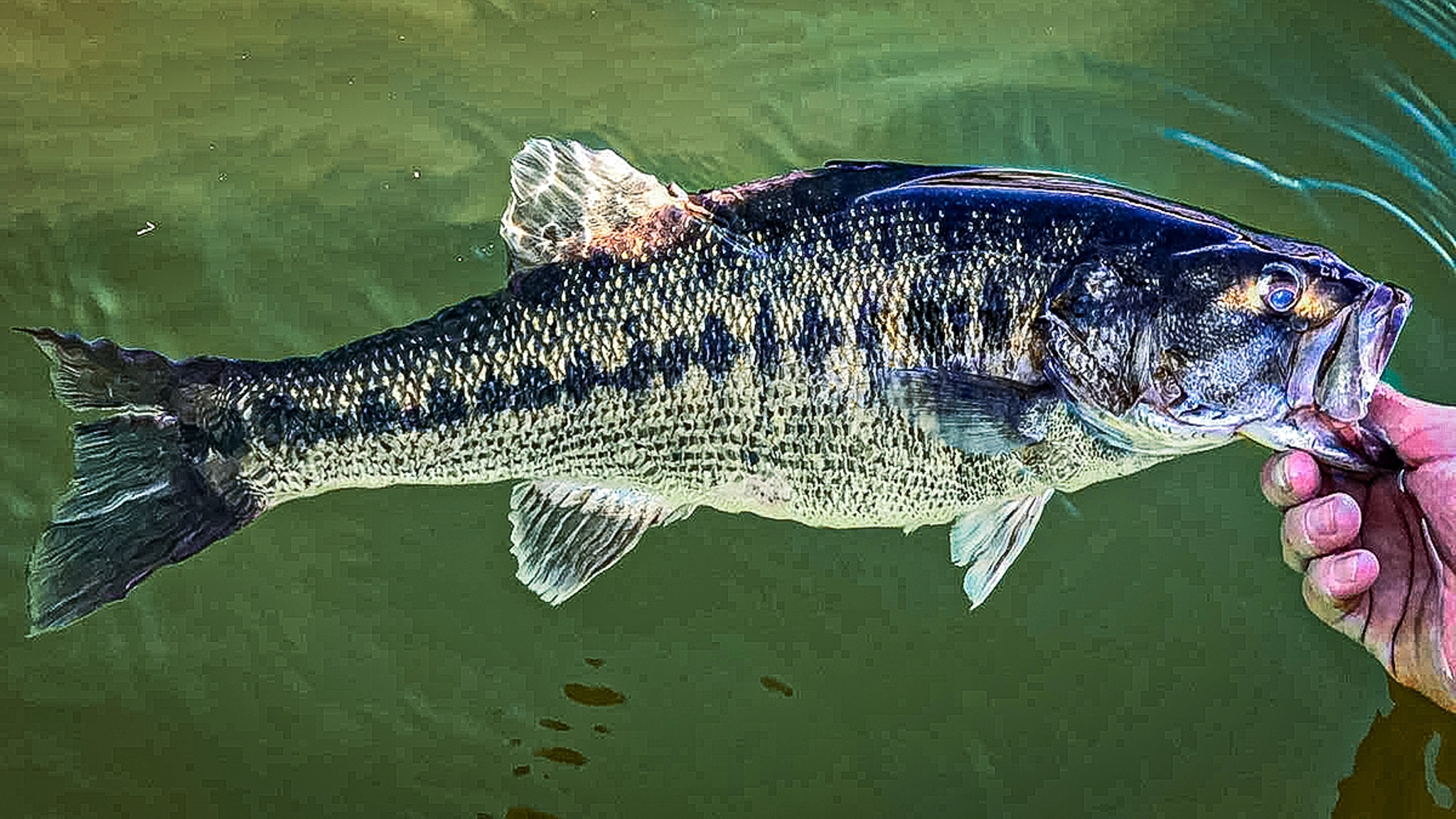As winter sets in, bass transition to their typical winter haunts, opening the door for numerous cold weather patterns. The key to success during this time lies in understanding how bass operate in cold weather conditions and adjusting your strategy accordingly. While bass consume a wide variety of forage, certain winter bass lures have proven to be particularly effective for enticing winter time fish.
The right bait can make all the difference, but it’s not just about what you’re throwing. Knowing how and when to present each lure is key to finding success with most wintertime patterns. In this guide, we’ll highlight the top five winter bass lures that will consistently get you bit.
Our Top 5 Winter Bass Lures
- Jig and minnow
- Jerkbait
- Finesse jig
- Umbrella rig
- Flat-sided crankbait
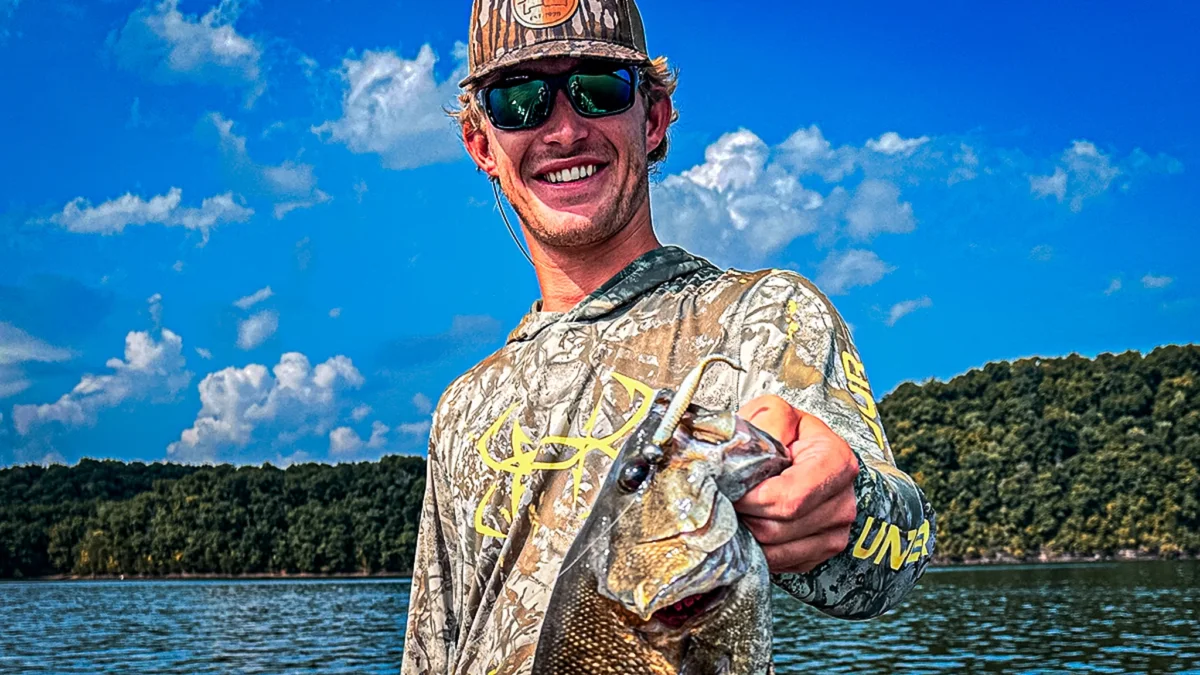
Jig and Minnow
The jig and minnow is likely the fan favorite winter bass lure among most anglers. This style of fishing has gained immense popularity over the past several years, and it truly works whenever you’re targeting cold-water suspended fish.
This rig consists of a standard jig head paired with a straight-tail, minnow-style bait. The true power of this rig comes from its versatility and effectiveness when paired with forward facing sonar.
As water temperatures cool, the majority of fish move out deep, often suspending in search of baitfish and other forage. Common locations where bass suspend are around drains, pinch points, creek channels and other locations where baitfish congregate. I’ve caught all three species of bass using this technique, and it works in nearly every lake in the country.
You fish this rig by targeting specific fish using forward facing sonar, floating the minnow directly over their head. Bass are lethargic this time of year, so you often have to pause the minnow directly over their head giving them a chance to strike. This rig works in a wide range of conditions, but clear water and overcast skies generally produce the best days of fishing on this specific lure.
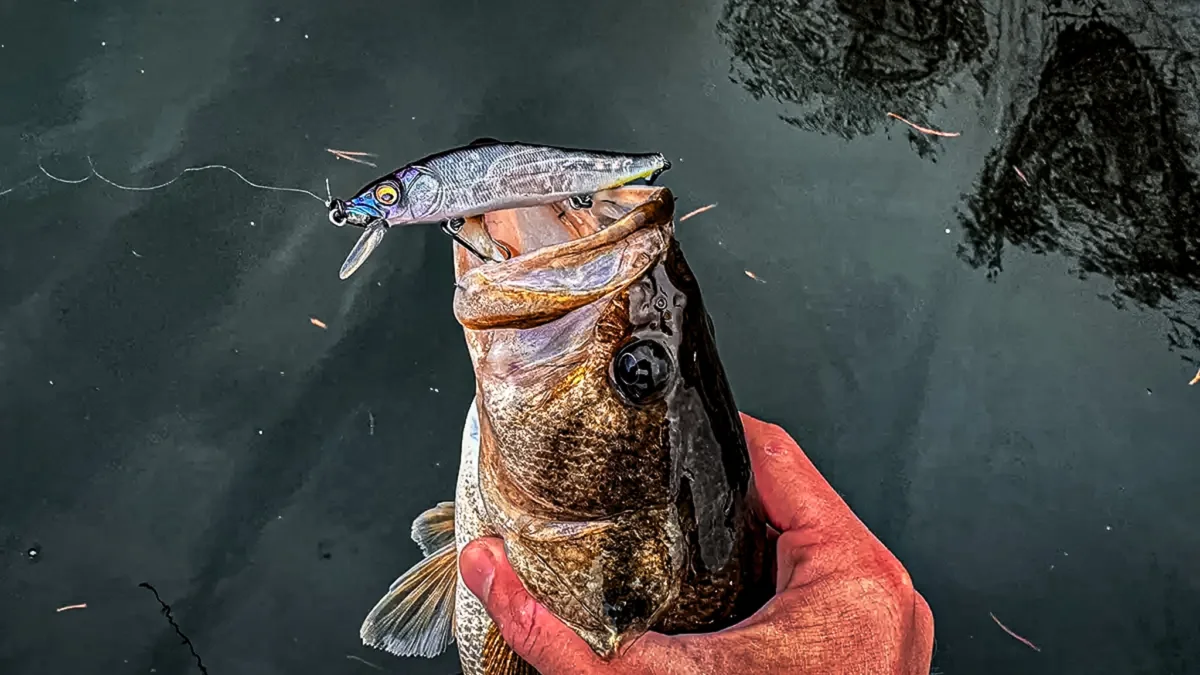
Jerkbait
A jerkbait is another cold water lure every bass angler should have in their tackle box. This is a versatile lure that shines in cool to cold water temperatures. The erratic, wounded-baitfish action of a jerkbait is ideal for enticing lethargic bass into striking. Jerkbaits also excel in low-light conditions like early mornings, late afternoons, or overcast days when fish are more likely to chase your bait. Additionally, they are particularly effective when targeting bass suspended around a specific piece of cover.
Like the jig and minnow, jerkbaits are most effective when fished near key structures where fish tend to congregate, like points, ledges, and drop-offs. In the winter months, I tend to focus primarily on isolated brush. This can be anything from a small stump to a giant brushpile, but they all serve as great staging locations for bass. I’ve caught some of my biggest bass with a jerkbait, including my personal best largemouth weighing 8.86 pounds. I’ve caught them anywhere from 4 feet deep to 30 feet deep this time of year, so adjusting your jerkbaits sink rate with added weights or larger hooks is a great way to up your success rate.
I’ve found that varying your retrieval speed is another way to generate a few extra bites when fishing a jerkbait. A slow, methodical twitch-pause cadence works well in colder water, while a faster, more aggressive retrieve is more effective in warmer temperatures or when fish are more active. Pay attention to water clarity as well, in clear water you need a faster more erratic retrieve, however in muddy water, you’re able to slow your bait down, allowing bass more time to track your lure. By understanding the right timing, location, and technique, a jerkbait can be an incredibly productive tool in your winter fishing arsenal.
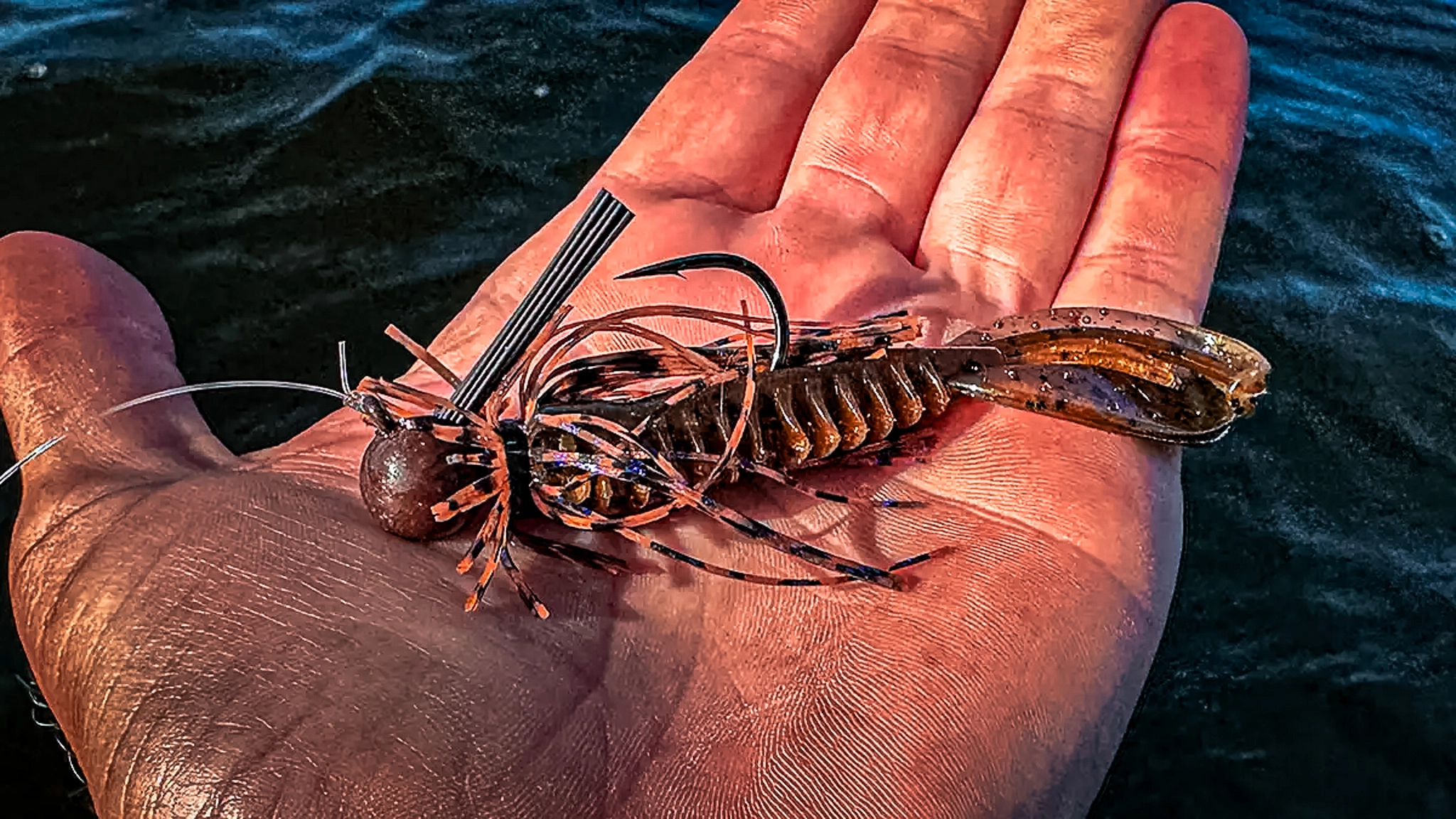
Finesse Jig
Finesse jigs are another staple lure for cold-water bass anglers all over the country. As bass slow down and become more selective in their winter feeding habits, a finesse jig really begins to do some damage. As the water cools, bass tend to feed less aggressively, and the slower, more deliberate presentation of a finesse jig becomes extremely effective. In these conditions, using lighter jigs with smaller profiles allows the bait to fall slower and appear more natural, which is ideal for enticing cold water bass.
Crayfish are a major food group for bass during the winter months, especially in rocky reservoirs. Crayfish tend to inhabit rock banks, submerged brush and other types of cover. Slowly dragging a finesse jig in these high percentage areas is a great way to get bit. I generally base the color of my jig on the local forage, so it’s important to do some research on what kind of crustaceans live in your local fishery.
The finesse jig is an excellent choice on your clear, blue-bird days with little to no wind. These conditions typically mean tough fishing, however this is often the best time to fish with a finesse jig. High sun causes bass to hold tight to cover, often refusing to chase moving baits such as a jerkbait or jig and minnow. This is where slowly hopping a finesse jig on the bottom truly shines. One great tip for this style of fishing is to pay attention to your fall rate. Most fish bite a jig on the fall, so adjust your size accordingly until you find the perfect speed.
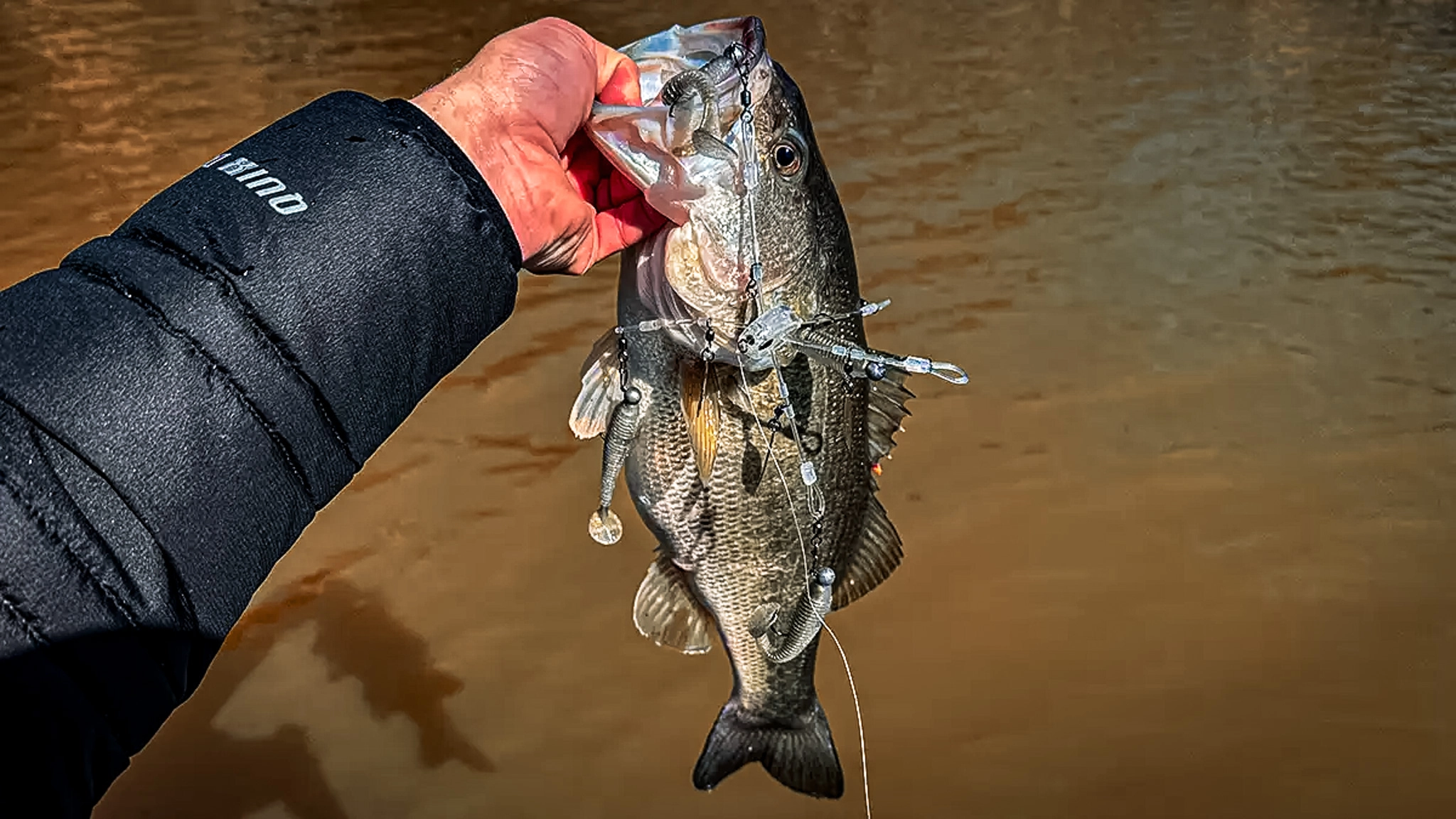
Umbrella Rig
Although slightly controversial, an umbrella rig is a fantastic option for catching both size and quality throughout the winter months. It’s most effective in open water or around submerged cover such as brush piles or flooded timber. The rig mimics a small school of baitfish making it highly attractive to bass, especially when they are keyed in on shad. You can use this lure in both clear and muddy conditions, as the multiple blades and swimbaits are great for calling bass in from a distance.
This rig is famous for catching giant largemouth, smallmouth, and spotted bass all over the country; so much so that it has been banned in most major bass fishing tournament trails.
Much like the jighead minnow and jerkbait, this rig is extremely effective when paired with forward facing sonar. I opt for the umbrella rig over other fast moving reaction baits whenever fish follow my lure but refuse to commit. I’ve found that fish react better to an umbrella rig than most other presentations throughout the winter, and it’s really my fail safe option whenever fishing is slow.
As expected, this rig works best when bass are feeding on shad. Therefore targeting areas with an abundance of baitfish is crucial. Focusing on pinchpoints, creek channels and drains are all locations where bait congregates in the winter. Using forward facing sonar to pick off individual bass feeding on bait is one of my favorite ways to fish an umbrella rig. Last but certainly not least, always check local regulations regarding the number of hooks allowed on an umbrella rig, as some areas may have specific limits for this type of rig.
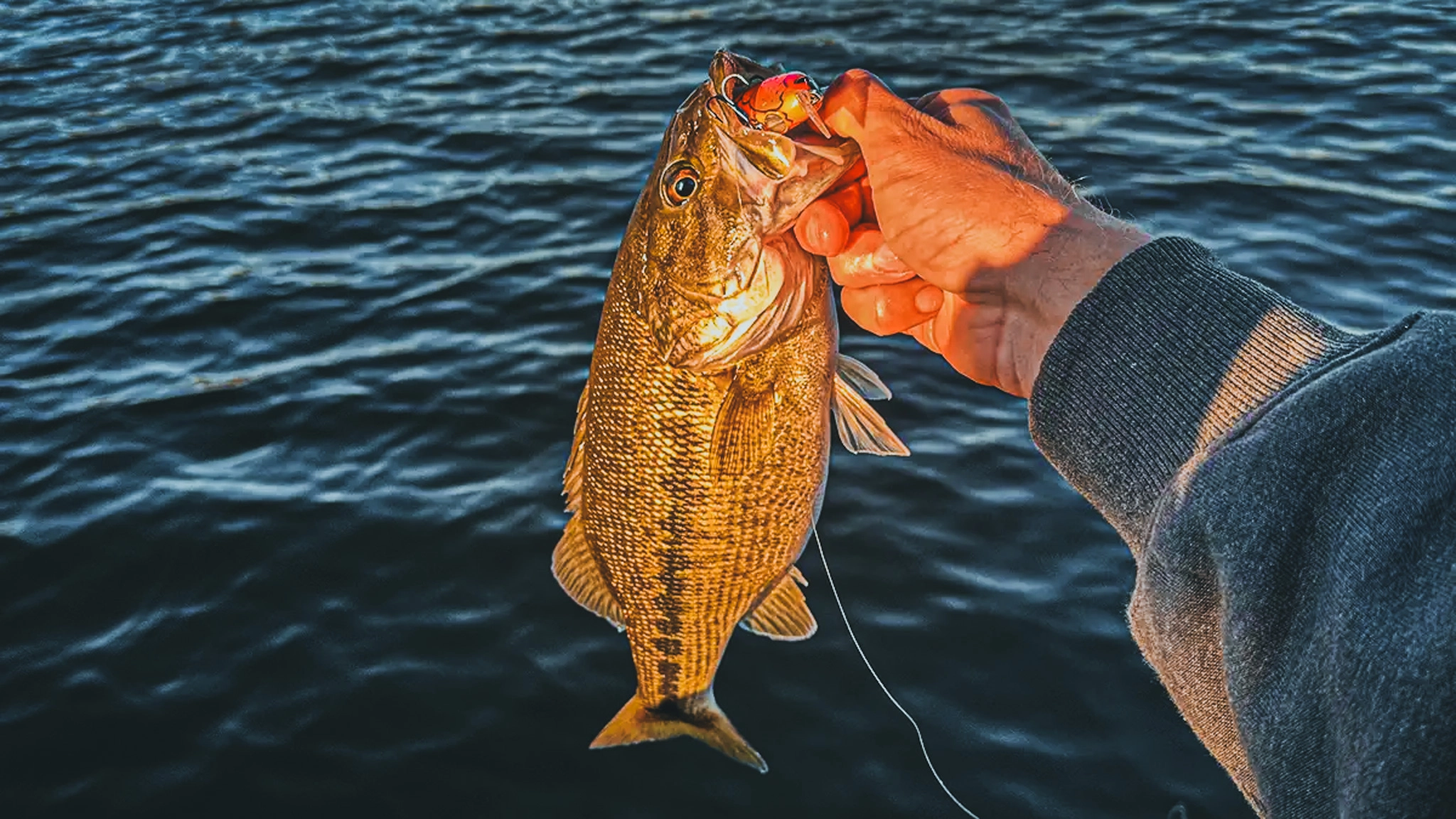
Flat Sided Crankbait
A flat-sided crankbait is another excellent choice during the cooler months. The tight, subtle wobble of a flat sided crankbait produces less vibration than a traditional round bodied crankbait, making it ideal for situations where bass are less active or feeding more passively.
These baits excel in stained or muddy water, especially when bass are keyed in on reaction style lures. Not only is the lure great for targeting bass that feed on shad, but it also mimics crayfish and other crustaceans. Popular colors this time of year include reds, browns and greens as that matches the majority of crayfish in the United States.
Another great scenario for throwing a flat-sided crankbait is when bass are holding around shallow rock. As temperatures cool, rocks retain heat from the sun, ultimately heating up the surrounding area. This often causes bass to congregate in these areas in search of warmer, more comfortable water. Winding a flat sided crankbait around is a great way to trick some of these lethargic bass into biting. Targeting other pieces of shallow cover such as docks, laydowns and channel swing banks are all great locations to throw a flat sided crankbait in the winter.
Whenever you’re throwing a flat-sided crankbait, it’s important to pay special attention to your line size and hook size. The thin bill and flat sides found on this style of lure produce a very tight wobble. Having too large of line or hooks can cause your action to diminish, ultimately hurting your success rate. I like to downsize my tackle this time of year, typically using 8- to 10-pound line paired with light wire treble hooks.
Final Thoughts
No matter which of these bass fishing lures you choose, they’re all sure to generate a few bites during the winter season. While each technique can be successful on its own, mastering all 5 lures is a sure fire way to guarantee success this coming winter. Whether you’re a die hard electronics fisherman or a good ole fashioned bank fisherman, these baits will catch you fish regardless of your fishing style. If you’re looking for a productive way to put bass in the boat this winter, I highly recommend giving these 5 lures a try.


